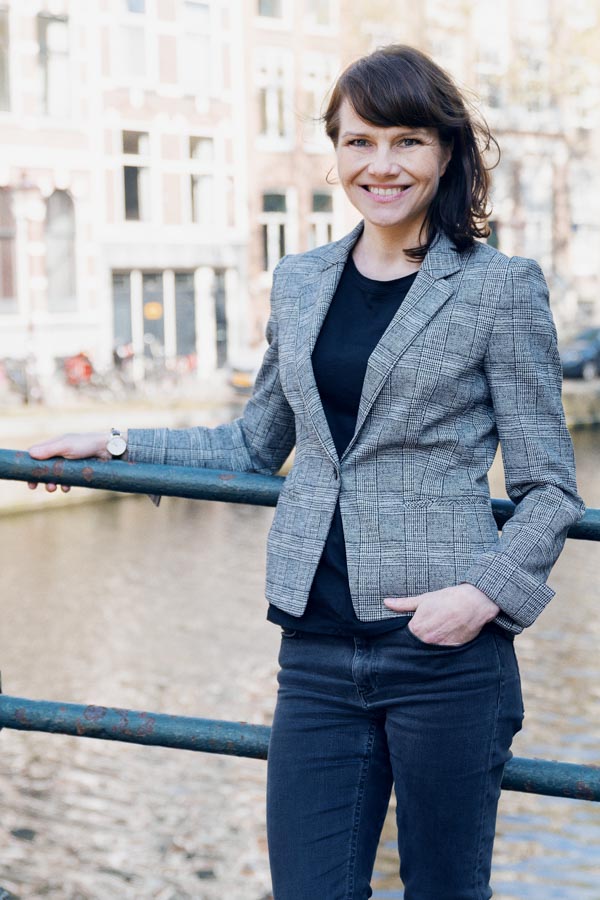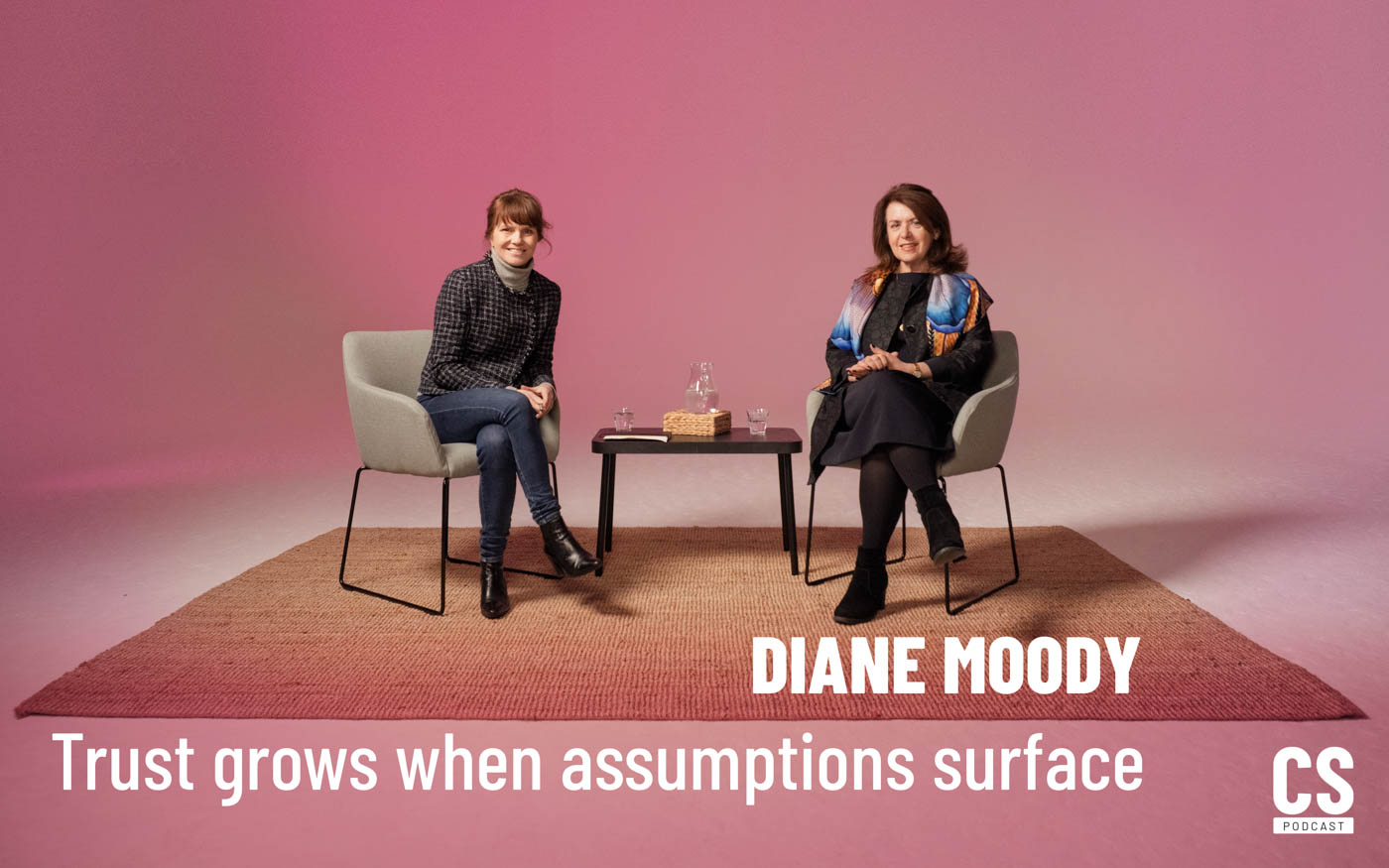In the latest episode of the Culture Sand Podcast, “Leaders’ inner dialogue is an untapped cultural force” we had the great pleasure of speaking with Diane Moody, Global Lead for Inclusion and Diversity at ASML — the innovation leader in the global semiconductor industry.
Discussion points
Leadership and culture are being reshaped faster than ever. In this episode, we explored what a “good” organisation looks like today — what works, what unites people, and what enables real performance.
We focused on three major forces driving the shift:
- A changing workforce — more diverse in age, expectations, and life realities
- A changing model of work — hybrid, remote, flexible, and increasingly complex
- A changing view of culture — no longer an HR concern, but a core performance lever
From a leadership perspective, the challenge is sharper than ever:
How do you align business priorities with human needs — without losing direction, trust, or performance?
Leadership in a complex era
Today’s leaders are navigating what organisational theorists once only warned about — extreme volatility, uncertainty, complexity, and ambiguity. The COVID-19 era accelerated these shifts, but it didn’t stop there. Geopolitical instability, AI disruption, and workforce aging are converging.
Yet within this complexity lie new leadership opportunities — to rethink how decisions are made, how people are empowered, and how cultures are shaped.
What the new workforce expects
Today’s workforce spans multiple generations with wildly different expectations. Younger workers seek flexibility, autonomy, and purpose — they see work as a two-way deal, not a lifelong commitment. Older workers are focused on relevance, sustainability, and re-skilling as their careers extend.
Leaders must respond with nuance — not blanket policies. Understanding each group’s motivations is now essential to building a workplace that can evolve, perform, and retain talent.
Rethinking learning and ownership
The top-down training era is fading. Organisations now expect employees to drive their own development. Learning is no longer delivered — it’s enabled. But not everyone has been taught how to take ownership.
The shift from compliance to self-direction demands a culture that supports autonomy without assuming it. Younger workers may jump in with confidence. Others, shaped by hierarchical systems, may need help redefining their role.
Leaders must strike the balance: support without spoon-feeding, clarity without control. Empowerment isn’t a switch — it’s a build.
Leading for performance — not uniformity
The role of the leader hasn’t changed: results still matter. But the approach must.
Today’s leaders must manage diverse personalities, distributed teams, and varying levels of autonomy. The “one-size-fits-all” leadership model no longer applies. Each employee is like a unique interface — and great leaders learn how to work with each one.
Hybrid work: What it reveals
Hybrid work isn’t just a logistical choice — it reveals what companies truly value. Some CEOs push for full office returns. Others embrace flexibility. These choices are rarely neutral. They reflect unspoken beliefs about trust, culture, and control. New work models are a litmus test for organisational values.
Culture by default or by design?
Culture happens — even if you don’t design it. Every group forms norms, rituals, and expectations. But when leaders don’t pay attention, those norms reflect habit and hierarchy, not strategy.
A strong culture can be designed. But it requires awareness — of what people are experiencing, how inclusion really plays out, and who is being left behind. In hybrid environments, even well-meaning values can translate into exclusion if visibility and access aren’t consciously managed.
Simplicity and smooth work as a hidden advantage
In a world of complexity, simplicity is a competitive edge — and a cultural asset. When work is smooth, frictionless, and well-supported, people move faster and feel more motivated. When it’s chaotic, people shut down.
Leaders should pay closer attention to the daily experience of work. Are processes helping or hindering? Are tools streamlining or scattering? Simplicity isn’t soft. It’s what makes meaningful work possible.
Sometimes, the most powerful cultural intervention is subtraction. Removing clutter can be more powerful than adding more.
Redefining empowerment
Empowerment is often talked about, rarely defined. Real empowerment isn’t about giving permission — it’s about helping people understand what they own, where they can act, and that they’re trusted to do so.
It takes three things: clear boundaries, real competence, and psychological safety. Without all three, people hesitate, second-guess, or burn out trying to figure out what’s expected.
The real role of values and assumptions
In fragmented, hybrid, multi-generational organisations, values matter more than ever — not as slogans, but as decision tools. When structure is loose and visibility low, shared values keep people aligned.
But even values are surface-level unless leaders examine the assumptions beneath them. Culture is ultimately shaped by what leaders assume to be true — about work, people, and power. If those assumptions go unexamined, they silently drive decisions and behaviours. To truly shape culture, leaders must surface and question their defaults.
The power of inner dialogue
Trust in leadership is falling — and one overlooked reason is opacity. Employees hear decisions, but not the thinking behind them. They see the what, but not the why.
When leaders make their inner dialogue public — sharing the reasoning, tension, and values behind choices — they build clarity and connection. It shows integrity. It invites followership. Culture shifts when leaders speak from the inside out.
—–
Diane, thank you so much for being our guest and sharing your valuable insights on culture. We truly enjoyed our discussion!

About the author

ADVISOR, STRATEGY AND CULTURE
Tintti Sarola
Tintti Sarola is a strategist, transformation lead, and culture expert who believes the journey defines the outcome. With a background as a national team-level dressage rider and a track record of podium finishes up to the European Championship level, she brings the same intensity, focus, and commitment to business as she once brought to elite sport.
Her career spans law, tech, strategy, and transformation – from her early days in contract law and IPR to leading digital transformation, business development, and culture-powered change initiatives. Tintti has helped build successful start-ups, scale family-run businesses, and reshape how established organisations think, behave, and operate.
She specialises in helping leadership teams rewire how they work – aligning strategy with behaviour, shifting entrenched patterns, and building the human systems that make change stick. Sharp on strategy and fluent in human dynamics, Tintti is known for cutting through noise, connecting the dots, and helping companies move – fast and together.

